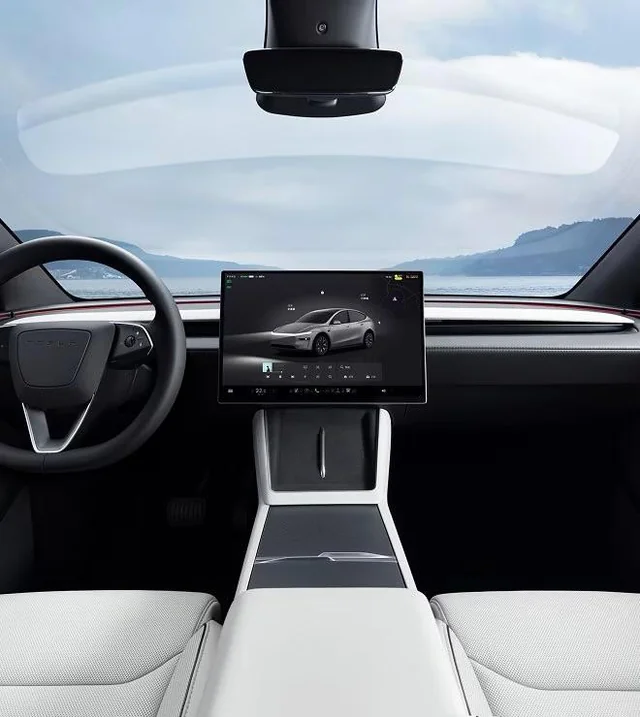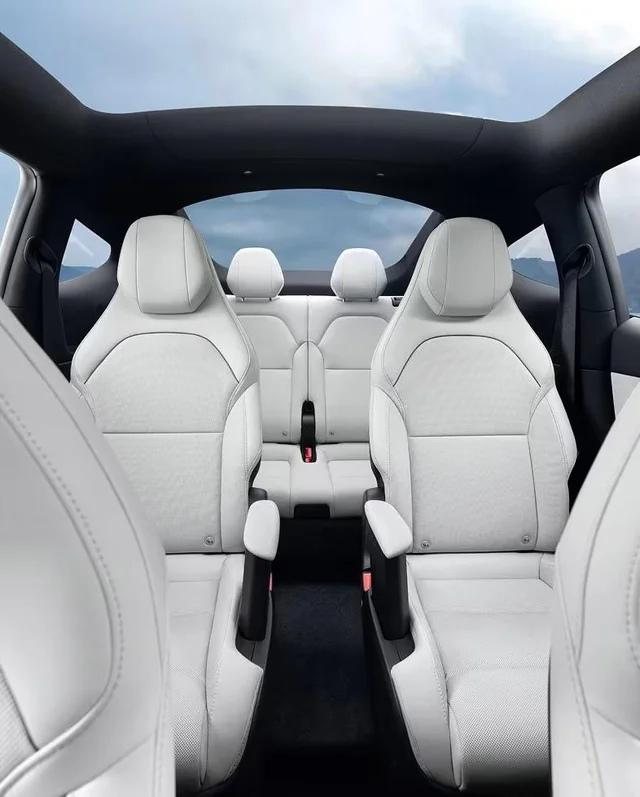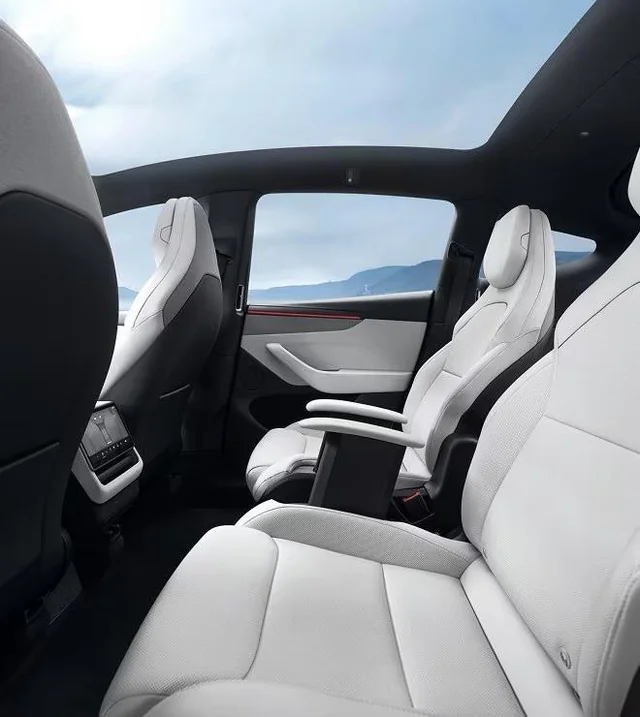Tesla Launched a New Model Y L in China But Musk Says it May Never Reach the U.S.
Tesla on Monday unveiled the Model Y L, a stretched six-seat version of its best-selling crossover, in Shanghai with a starting price near $47,180. The vehicle, long anticipated after regulatory filings surfaced earlier this summer, adds roughly seven inches to the wheelbase and offers significantly more interior room. But any excitement among U.S. Tesla fans was dampened by Elon Musk himself, who the following day told followers on X that the car might not ever come to America.

“This variant of the Model Y doesn’t start production in the U.S. until the end of next year,” Musk wrote. “Might not ever, given the advent of self-driving in America.”
The remark rattled Tesla investors, with shares sliding midweek as analysts questioned whether Musk was signaling a fundamental shift away from consumer vehicles toward robotaxis.
Robotaxi priorities over family cars

Tesla’s autonomous driving ambitions have increasingly dominated its roadmap. Musk has promised a September rollout of “open access” robotaxi services in Austin and the San Francisco Bay Area, expanding beyond the invite-only program currently operating with safety drivers. Texas regulators also recently granted Tesla Robotaxi LLC a rideshare license, a step toward commercial service under new state guidelines.
On X, Musk hyped the latest build of Full Self Driving, saying version 14 “feels alive.” The company’s valuation rests less on car sales and more on hopes that its software will unlock recurring revenue as a mobility service. That strategy helps explain why Tesla might hold back a vehicle that could cannibalize sales of the higher-priced Model X or distract from robotaxi development.
Frustration among Tesla loyalists
The online reaction to Musk’s comments was swift, blending disappointment with sharp debate over Tesla’s direction.
Mike P. argued that the move was “bullish” for autonomy: “The haters and doubters are about to get cooked by autonomy.” Others disagreed, noting practical gaps in Musk’s robotaxi vision. Pedro Teixeira, a physician and Tesla owner, wrote: “Robotaxi doesn’t solve for keeping your own stuff in the car. Families are particular about car seats, emergency changes of clothes, snacks. Robotaxi will be huge, but won’t replace family car ownership.”
Another user, Jonathan Numer, pointed out rural America’s realities: “Downtown you’ll be able to get one in minutes, but where I am it will never happen.”
That tension, between the futuristic promise of robotaxis and the grounded needs of families, defined much of the discourse. “Soccer moms would love this car,” wrote Timothy McGrath, adding that Tesla should support bigger families rather than funnel everything into shared fleets. One commenter bluntly summarized: “I don’t care how good self-driving is, if you need more seats, you need more seats.”
Even Tesla bulls admitted confusion. “Why would he say it’s coming late this year and create a massive Osborne effect? He has a plan,” wrote Drew Reedman. Others suggested Musk was simply trying to prop up current Model Y and X sales until production capacity allowed.
A vehicle designed for American tastes, just not America
The sting of Musk’s warning is amplified because the Model Y L seems tailor-made for U.S. buyers. Its specs show clear appeal for families who find the regular Model Y cramped:



- Range: 751 km CLTC (approx. 327 miles EPA)
- Acceleration: 0-60 mph in 4.3 seconds
- Seating: Six-seat configuration with captain’s chairs in the second row
- Cargo space: 2,539 liters, nearly 20% more than the standard Y
- Weight: Just 4.8% heavier than the current Model Y
- Suspension: Continuous variable dampening for smoother rides
- Interior: Extended white trim, aluminum accents, black headliner
- Comfort: Ventilated first- and second-row seats, heated third row
- Seats: Power folding for all rows, powered armrests, extendable thigh support
- Tech: 16-inch touchscreen (slightly larger than before), 18-speaker premium audio
The model also debuts a new “Starlight Gold Metallic” paint and offers upgraded climate control throughout.
These features hit the exact sweet spot for American families: real third-row usability, storage space for long trips, and comfort details that rival luxury SUVs. For parents with three kids, or anyone wanting more than Tesla’s current midsize crossover can offer, the Y L looks like the missing link in the lineup.
As one Reddit user put it: “This is exactly the car we’ve been waiting for. The standard Y is simply too small for three teenagers.”
A missed opportunity, or a strategic delay?
Some commenters accused Musk of talking down the Y L simply to avoid cratering demand for existing models. “Translation: just buy the current Model Y or Model X, don’t wait for this,” wrote one. Another noted Tesla’s history of downplaying imminent launches to protect current sales, only to release them sooner than expected.
But others saw genuine strategy in Tesla holding back. The Model Y already dominates global EV sales, while the Model X lingers as a niche offering. Introducing a larger, cheaper alternative could wipe out what remains of the X market. And if robotaxi truly takes off, Musk may prefer to dedicate production lines to fleet vehicles rather than consumer variants.
Still, many see a contradiction between Musk’s frequent warnings about population decline and his reluctance to sell larger family cars. “Here Elon is beating the drum on bigger families,” one user wrote, “and his own company does not cater to anyone with a family bigger than four.”
Broader EV market pressures
Tesla also faces practical challenges in the U.S. market. With federal EV incentives set to expire under the Trump administration’s latest budget, demand could soften. That may explain why Tesla is prioritizing production of cheaper models first, rather than tooling up factories for the larger Y L.
Meanwhile, Chinese rivals such as BYD and Li Auto are rapidly rolling out competitive three-row EVs, making it urgent for Tesla to fill gaps overseas, even if it means holding back in its home market.
What happens next
For now, American buyers are left waiting, wondering whether the Model Y L will ever make the jump across the Pacific. Some remain optimistic. “This car makes too much sense in the U.S. for it to not eventually be released,” wrote one commenter. “Unless robotaxi exceeds even the biggest bulls’ expectations, we still have at least another decade of car sales as usual.”
Others are resigned. “I’d trade in my 2022 Model Y in a heartbeat for this variant,” one fan said. “But maybe it’ll never come.”
That uncertainty underscores Tesla’s crossroads. Will it remain a car company, building vehicles for families who still want to own them? Or will it transform into a mobility giant, focused on fleets of robotaxis and subscription software?
The Model Y L may prove to be more than just a bigger SUV. It could be the symbol of Tesla’s identity crisis in 2026: torn between present-day buyers who want practical vehicles, and a future vision where private car ownership becomes optional.
For now, Musk’s message is clear. If Americans want the Model Y L, they’ll need to keep waiting, and maybe waiting forever.